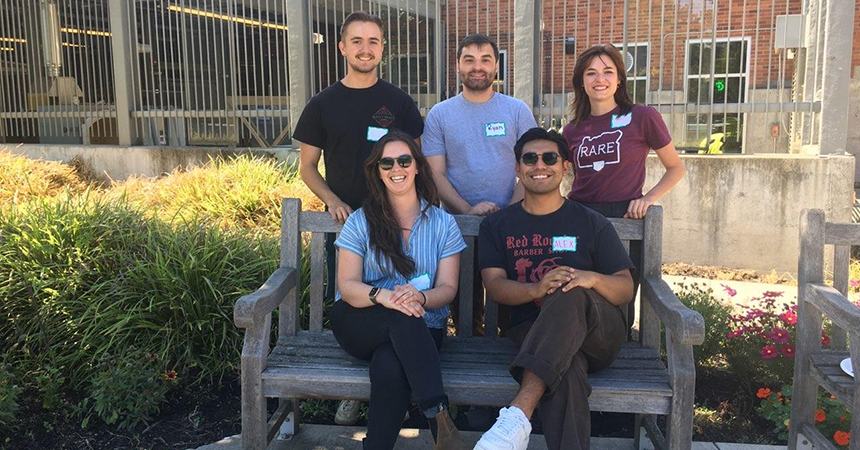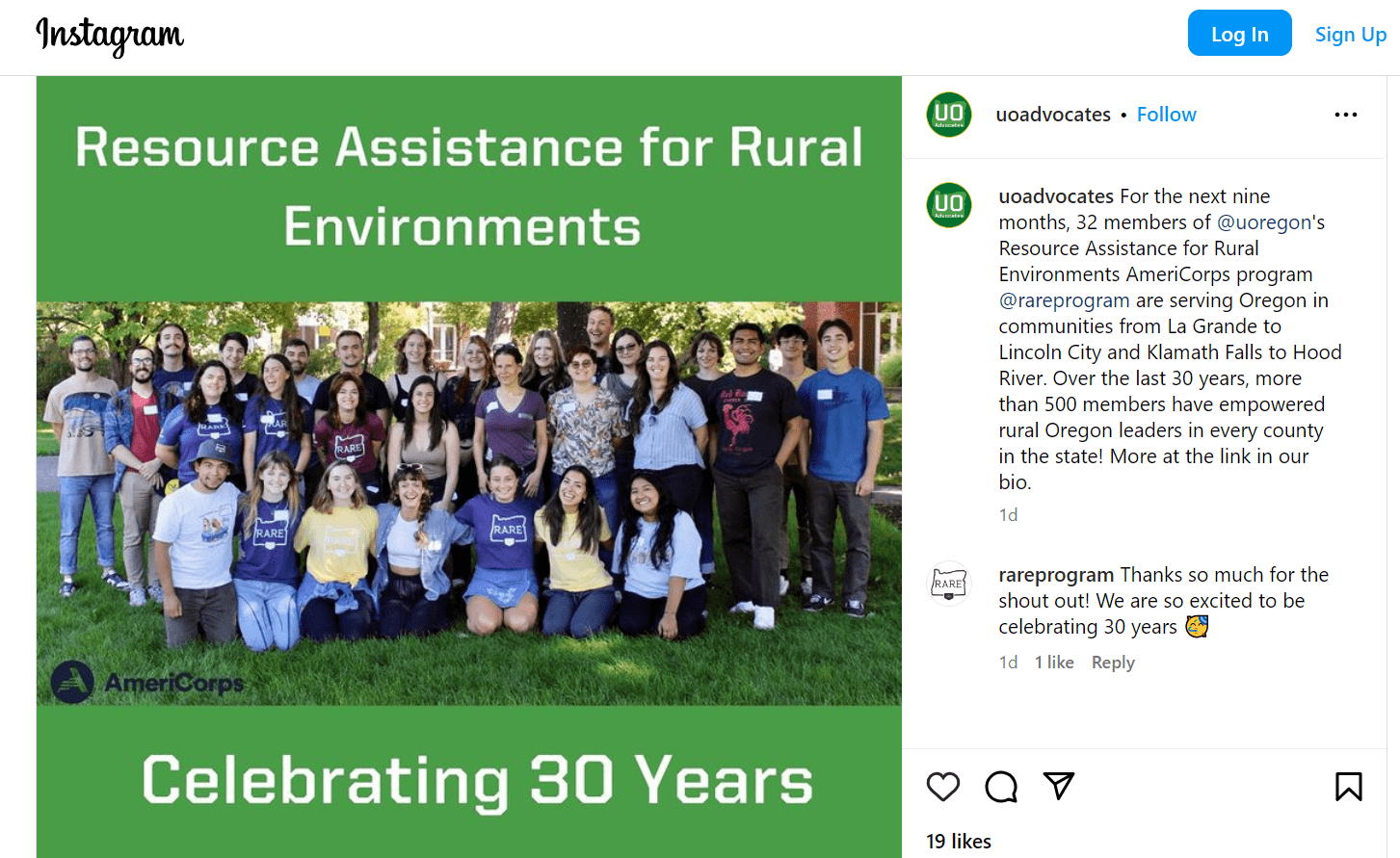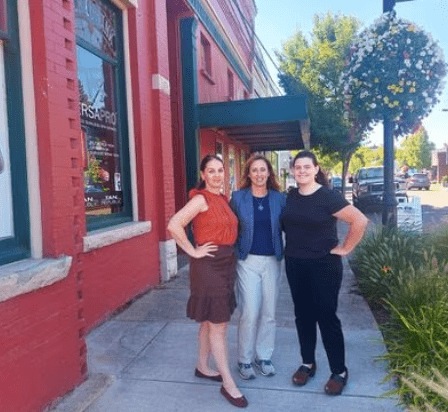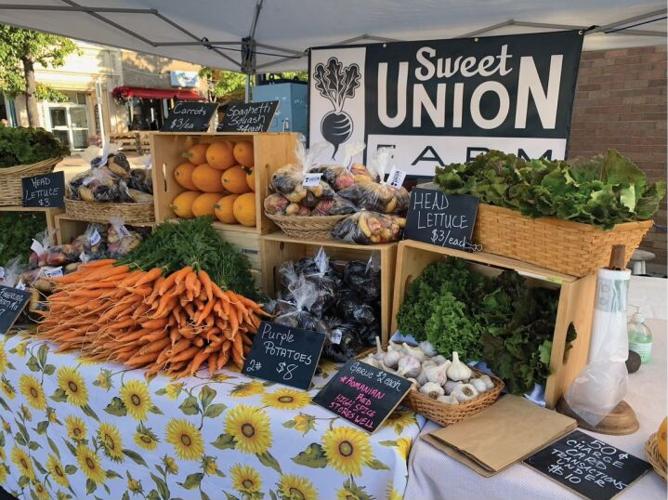By Peter Tavernise
What if young people concerned about the effects of climate change had the opportunity to perform hands-on service to mitigate its effects on vulnerable communities? As Service Year Alliance sees it, every youth in America should have that chance, and every community deserves youth service as a resource for combating climate challenges. Since its launch in 2016, Service Year Alliance has embarked on a mission “to make a year of paid, full-time service – a service year – a common expectation and opportunity for all young Americans” to serve communities across the nation.
Key to realizing the organization’s mission is ServiceYear.org, an online platform where individuals looking for service year opportunities can connect with organizations and programs offering them. Since 2013, Cisco has provided the organization vital technical and financial support, starting with the platform. Later, when events triggered by climate change became more frequent and severe, Service Year Alliance expanded its focus to include climate-related service, which qualified it to receive additional funding from the Cisco Foundation‘s $100 million USD portfolio, earmarked for supporting non-profit organizations working towards a more regenerative and resilient future climate.
In the following Q&A, Kristen Bennett, Service Year Alliance’s Chief Executive Officer, discusses its unique mission and how it’s changing the landscape of service years.
Q: What drew you to the national service space, and how did you become CEO?
A: I graduated from college in 2008, as the recession hit. I was already considering a mission-oriented career and found a service year opportunity through AmeriCorps VISTA with the WE Connect initiative, spearheaded by First Lady of California, Maria Shriver. During my service year, I built critical community partnerships and helped to connect low-income families to programs and resources to become more financially stable. I received a modest stipend and health care benefits while other recent graduates around me competed for a few unpaid internships and hourly service-industry jobs. The experience was transformational, placing me on a career path in service that I might not have otherwise reached on my own.
I wanted to make an impact beyond my service year, so after it was over, I accepted a position as a program officer at California Volunteers, California’s state service commission overseeing service and volunteerism in California. While working there, I learned the ins and outs of the service sector while building my professional network, which included Shirley Sagawa, one of AmeriCorps‘ founders. I eventually joined her at the National Conference on Citizenship in Washington, D.C. to lead the development of ServiceYear.org, the first technology platform dedicated to connecting the next generation of youth to service years. Over the next nine years, my role evolved into Service Year Alliance’s Chief Strategy Officer, Interim Co-Chief Executive Officer, and finally Chief Executive Officer, my current position.
Q: How has collaboration with Cisco and the Cisco Foundation been instrumental in advancing and expanding national service programs?
A: Cisco’s been with us since the beginning – first, in the early days before our organization even existed, offering $2.1M in philanthropic support through the Silicon Valley Community Foundation to launch Service Year Alliance and to create ServiceYear.org, the first technology platform to act as a marketplace matching young people and service year positions. We built the platform from scratch, and we couldn’t have done it without a philanthropic partner who had both technology expertise and resources to help us get the work started.
Over the years, Cisco has supported everything from our efforts to reach young people, to pandemic and public health response, and now the Climate Project. Our long partnership around helping young people become aware of, learn about, and find the right opportunity for themselves has allowed us to optimize very effectively for specific needs – like how to help young people find the right climate-related service year position.
As a result, throughout 2023 our conversion rate from registering on the site to actually submitting an application increased from 23 percent to 36 percent. Climate organizations saw even bigger shifts – Grid Alternatives, which advances resiliency programming, saw a dramatic 360 percent increase in enrollments and a 165 percent rise in applications this past year, reflecting the growing interest young people have in doing climate-focused service years.
Q: What does a typical service year look like?
A: There is no “typical” service year since opportunities can vary widely. They range from delivering high-dosage literacy tutoring to bring students up to grade level, helping rural non-profit organizations develop strategies for recruiting volunteers, giving tax preparation assistance to low-income families, assisting individuals at a community health center, or installing solar panels in under-resourced neighborhoods.
Q: What is the Climate Project, and how does a partnership between Service Year Alliance and the Cisco Foundation power the initiative?
A: A poll led by Data for Progress, an American think tank, shows climate change is a major concern for 91 percent of youth, but two-thirds of them aren’t sure how to make a tangible difference. In 2022, Service Year Alliance kicked off the Climate Project in a multi-year partnership supported by the Cisco Foundation to specifically address climate-related issues by recruiting the next generation’s youth into climate-related service to assist communities in becoming more resilient to climate change and empower them with opportunities to help tackle this daunting crisis.
To develop the project, we first hosted targeted conversations with national service programs, green sector employer associations, workforce development partners, and other organizations and agencies working to address problems brought on by climate change. We also formed a cohort made up of eight standout service year programs to take a deeper dive into effective strategies for leveraging service to both further address the impacts of climate change, as well as equip young people with the skills, certifications, and experience they will need to enter into green sector careers.
Taking what we learned, we published a suite of three guides for partners to use as “roadmaps” to best leverage human capital in three distinct areas related to climate and environmental resilience: community capacity building, rural resilience, and energy efficiency. They spotlight a diverse assortment of program models throughout the U.S., offering organizations guidance for choosing the best model for developing their own programs and pathways.
Q: What are your most valuable partnerships, and how do they further your mission?
A: Besides Cisco, the Cisco Foundation, and AmeriCorps, as part of the Climate Project we have worked with a broad spectrum of organizations committed to solving climate issues in under-resourced communities. In January 2023, we launched The Partnership for the Civilian Climate Corps (PCCC), a non-partisan partnership of over 100 national, state, and local cross-sector organizations representing service, workforce, labor, environmental justice, conservation, and youth – all organizations aligned behind shared principles for engaging youth in climate-focused service and workforce development opportunities. The PCCC includes The Corps �Network, American Clean Power, Jobs for the Future, Evergreen Action, and Americas Service Commissions, among many others.
Additionally, the Interstate Renewable Energy Council was an important link to additional networks such as the National Community Action Partnership, the National Association for State Community Service Programs, and the Building Performance Association. Our relationships with these organizations allow us greater access to national conversations and information essential to promoting national service as a talent pipeline to meet our nation’s ambitious climate goals.
Q: What are some of the benefits for corps members, including post service?
A: At a basic level, service corps members receive a living stipend, health care coverage, and skills training. After completing a service year, corps members are eligible for a Segal AmeriCorps Education Award, which they can use to pay for higher education or pay off student loans. Additionally, those who participate in service year programs without a bachelor’s degree are over twice as likely to go on to earn their degree compared to their peers.
Following service, we support service year alums by keeping them connected to one another and informed about a variety of career pathways available to them. Among those with bachelor’s degrees, 38 percent enter into service-oriented career areas – education, community and social services, and health care – compared to 13 percent of their peers. For climate-focused alums, we are committed to ensuring they are connected to green sector career opportunities and informed about their post-service options during and after their term of service.
Q: What are some ways climate-related service benefits communities?
A: Corps members dedicated to tackling climate hurdles in local communities have a direct and tangible impact. We selected the focus areas for our roadmaps based in part on a landscape assessment of the impacts of programs.
For example, one of the programs we worked with on our Energy Efficiency roadmap, the Mile High Youth Corps’ Energy & Water Conservation Program, saved over 101,500 low-income families 620,799 kilowatt hours of energy across Colorado in 2021 – a total savings of $160,000 USD. We are excited to continue to work with service year programs and employer partners advancing energy efficiency to help expand programming and create additional pathways for service year alumni to enter into weatherization and clean energy careers.
And in developing the Rural Resilience roadmap, we saw how AmeriCorps programs like Resource Assistance for Rural Environments (RARE) are not only demonstrating how service year corps members can infuse the additional capacity that is needed for more rural communities to participate in the growing green economy, but are also equipping these young adults to serve as the next generation of climate leaders in the communities in which they serve – with multiple corps members from the 2022/23 graduating class obtaining staff positions at the local nonprofits that hosted them during their service years. To help expand these types of results, Service Year Alliance is directly supporting several organizations as they seek to create and expand service year programming in rural communities throughout the Southeast.
Finally, we can already see how our Community Capacity Building roadmap is helping to fuel the development of state-based climate corps programming. In North Carolina and elsewhere, we are very pleased to see state-based initiatives really leaning into the belonging and inclusion elements of our resources and placing equity at the center of their program development efforts. By adopting practices that not only support diverse corps members, but also bring corps member host sites and supervisors along on the journey, new opportunities are being created for underrepresented populations to become involved in climate action. 2024 is going to be a big year for expansion of state-based climate corps programming, and Service Year Alliance is ready to help those initiatives grow in a way that will create opportunity for all.
Q: Can you share a story about a corps member whose life changed dramatically after a service year?
A: While in her early twenties, Geri Lopez, a member of the White Earth Tribe in central Minnesota, was working to bring solar and wind power to her community when governmental funding for it dried up. However, she wanted to continue working in the renewable energy sector.
That’s when she applied for a service year with Ampact AmeriCorps under the Climate Impact Corps Home Energy Initiative. Geri served alongside an energy-efficiency professional to make homes in low-income communities safer and more energy efficient. She learned how to test and analyze building envelopes, and just about everything else related to home weatherization. Equally important, Geri developed new problem-solving and communication skills, which, along with her training and experience, helped her land a job as a weatherization auditor and inspector at MAHUBE-OTWA Community Action Partnership, hence enabling her to join the green economy.
This article first appeared on StreetInsider.com and is republished here under a Creative Commons license.









